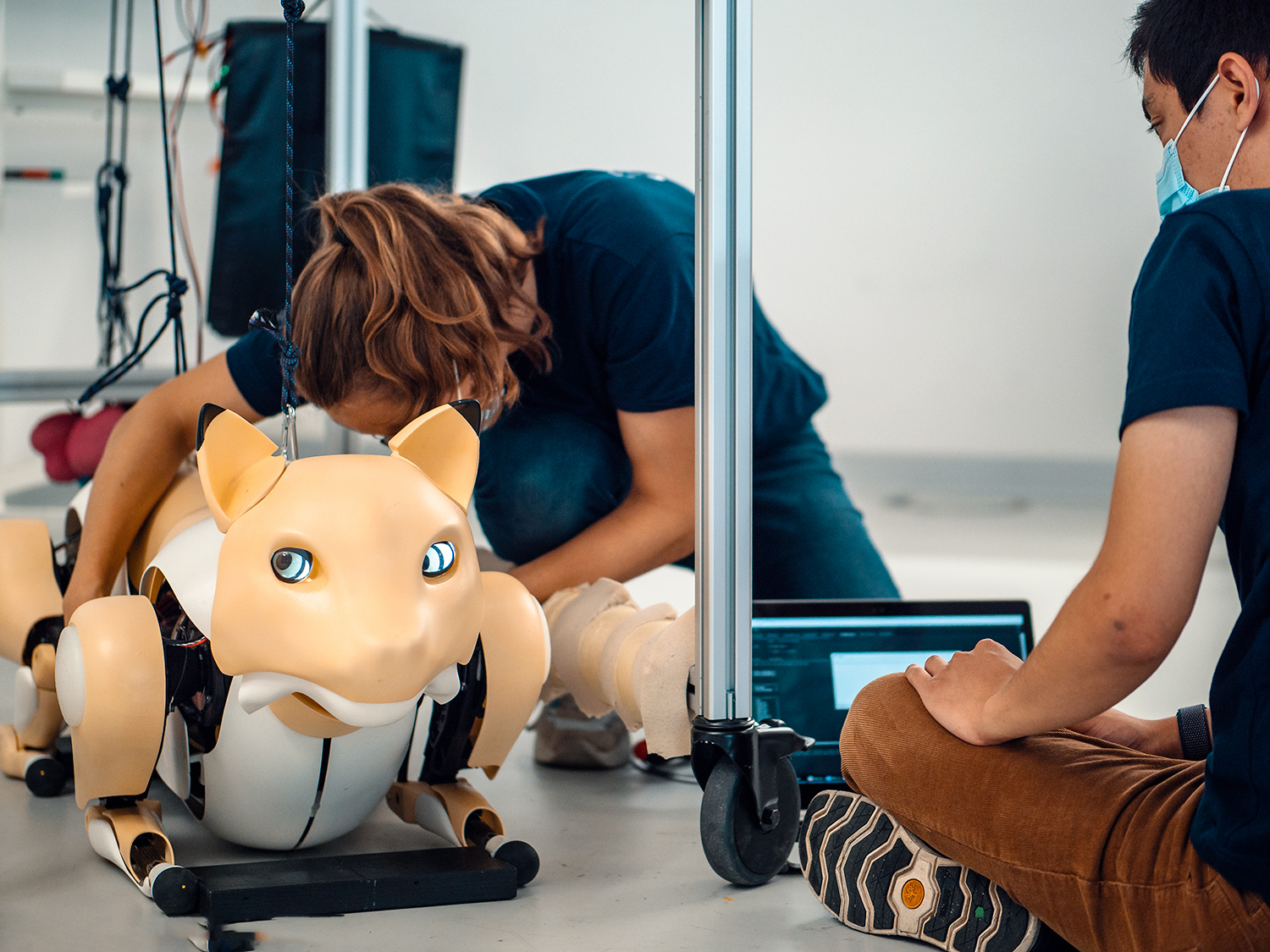When I think of robotic animals, I generally think of robot dogs. Sony had a line of robot dogs in the late 1990s and early 2000’s called Aibo. They were great; you could play fetch with them, they had different emotions and would bark, and the coolest thing to me was that they could take photos through the cameras that were their eyes. That just blew me away. Well, now Swiss engineering student Andrina Grimm and her mechanical and design team want you to think of cats when you think of robotic animals. Not just cats, but cats with 3D printed shells.
Swiss universities, ETH Zurich, the Zurich University of Applied Sciences, Zurich University of the Arts, and the University of Applied Sciences Northwestern Switzerland, began an interdisciplinary focused student project named Dyana in autumn 2020. According to the proposal, 14 bachelor students were to design and build a unique robot. The team consists of six mechanical engineers, two electrical engineers, two system engineers, and four industrial designers new to animatronics.

3D rendering of Dyana: the 3D printed cat robot designed from scratch in just nine months. Image courtesy of Andrina Grimm/Sintratec.
Their vision was to build a dynamic animatronic robot that bridges the gap between animatronics and mobile quadrupeds. By combining the world of realistic but fixed animatronics and mobile but technical robotics, they aimed to build a robot that brings its cat-like character to life. In this emerging field of animatronics, the team is addressing a particular problem: how to playback computer-animated
movements by a walking robot in the real world.
As this was a student project, time was not on their side.
“It was a big challenge for us to build an entire robot from scratch–with our own legs, hips and shoulder mechanisms – in just 9 months,” Grimm emphasizes.
Dyana is designed to be a character who can display different emotions; the exterior design was given particular attention. Due to the intricate aesthetics of the cat-like body and the time constraint, it quickly because apparent that 3D printing would be integral to realizing their vision.
“We decided early on that we wanted to use the freedoms we get through additive manufacturing”, Grimm says.
For the configuration of the prototype, the team used three different 3D printing technologies: Selective Laser Sintering (SLS), Multi Jet Fusion (MJF), and Fused Deposition Modeling (FDM). “Our three criteria for the 3D printing material were the weight, design freedom, and short manufacturing time so we could iterate more quickly”, Grimm explains. “For our shell, for example, we used very light parts because we didn’t want to add more mass to the whole system.” For those unique material needs, SLS proved to be the perfect match.
Sintratec endorsed the endeavor by sponsoring 3D printed components that were laser sintered on the Sintratec S2 system. Grimm says the SLS technology was used for the thighs and shoulders. “With PA12, we get parts that are sturdy enough for the robot to sustain impacts, yet flexible enough to support curved surfaces.”
The next challenge was to make the pieces look cat-like. For this, they used spray painting and added a silicon pad to attach them to Dyana. Finally, the second set of parts were made so that the students could exhaustively test the movements of Dyana while having a fast replacement in reserve if something happened to break.

Andrina Grimm and her team are developing a cat-like robot named Dyana. Image courtesy of Andrina Grimm/Sintratec
Typically, robotic shells are made out of molded thermoplastics. However, Dyana magnificently validated that there are other, possibly better, ways.
“In our project, we showed that it is possible to use 3D printing as a shell for a robot which has not been done before”, Grimm summarizes. “I certainly think it has huge potential in the field of robotics.” The project isn’t over yet though. Several of the students are continuing the project as a bachelor’s thesis.
The tapestry that Dyana is creating with the blend of technologies is rather impressive. They’ve managed to combine several of my favorite things in life, robotics, animals, and 3D printing. I just might have to think of “cats” next time I hear the subject of robotic animals come up.
Subscribe to Our Email Newsletter
Stay up-to-date on all the latest news from the 3D printing industry and receive information and offers from third party vendors.
Print Services
Upload your 3D Models and get them printed quickly and efficiently.
You May Also Like
Consolidation in AM: How 2025 Is Shaping the Industry’s New Normal
The first half of 2025 has been marked by a clear shift in the additive manufacturing (AM) industry. Companies are no longer just focused on developing new tech by themselves....
Etsy Design Rule Change Reduces Selection of 3D Printed Goods
Online marketplace Etsy has implemented a rule change requiring all 3D printed goods on the site to be original designs. The update to the site’s Creativity Standards states, ¨Items produced using...
U.S. Congress Calls Out 3D Printing in Proposal for Commercial Reserve Manufacturing Network
Last week, the U.S. House of Representatives’ Appropriations Committee moved the FY 2026 defense bill forward to the House floor. Included in the legislation is a $131 million proposal for...
Transforming From Tourist to Native: Duro CEO Michael Corr Explains Why the Company Rebuilt its PLM Software on AI
In these early innings of the AI boom, many market analysts have expressed concern that AI spend has gotten too far ahead of the technology’s proven ability to deliver significant...

































